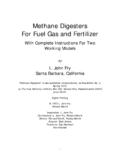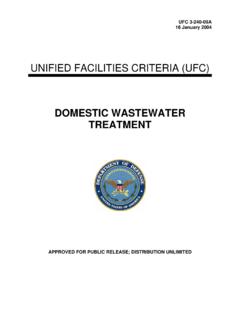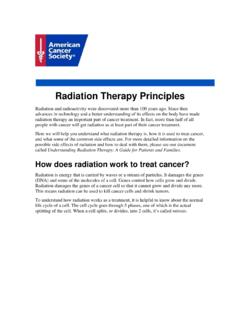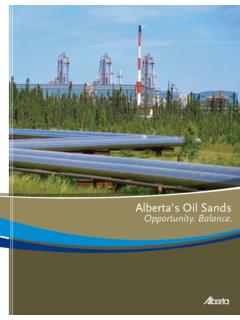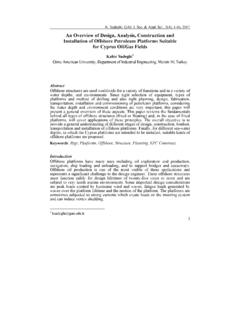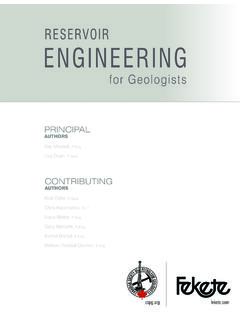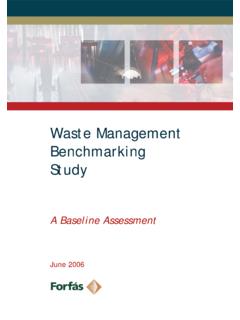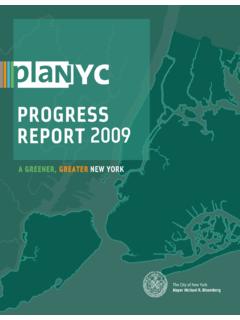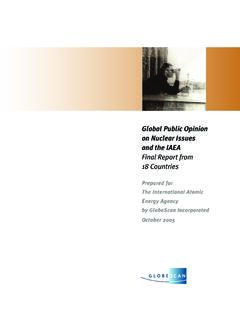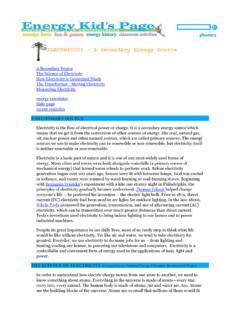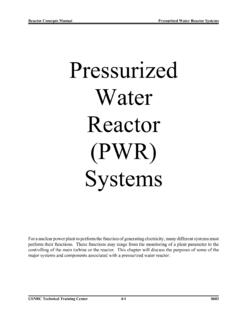Transcription of Nuclear Energy’s Economic Benefits Current and Future
1 April 2012 Nuclear Energy s Economic Benefits Current and Future Executive Summary The Nuclear energy industry can play an important role in job creation and Economic growth, providing both near-term and lasting employment and Economic Benefits . The 104 Nuclear units in the generate substantial domestic Economic value in electricity sales and revenue - $40-$50 billion each year - with over 100,000 workers contributing to production. Worldwide, over 150 new Nuclear plant projects are in the licensing and advanced planning stage, with 65 plants currently under construction. As a result, the years ahead will see a surge in demand for materials, components and services for the global Nuclear industry. The Department of Commerce estimates the global mar-ket for Nuclear products, services and fuel at $500-$740 billion over the next 10 years. The Department of Energy projects that elec-tricity demand will rise 24 percent by 2035, about 1 per-cent each year.
2 That means our nation will need hun-dreds of new power plants to provide electricity to meet rising demand and replace aging infrastructure. Nuclear energy is the only proven technology that can provide emission-free, affordable baseload electricity. Nuclear Plant Economic Benefits Each year, the average 1,000 megawatt (MW) Nuclear plant generates approximately $470 million in electricity sales ( Economic output) in the local community and more than $40 million in total labor These figures include both direct and secondary effects. The direct 1776 I Street NW Suite 400 Washington DC 20006-3708 1 In 2010 dollars unless otherwise noted. Nuclear Energy s Economic Benefits Current and Future April 2012 2 effects reflect the plant s expenditures for goods, services and labor. The sec- ondary effects include subsequent spending attributable to the presence of the plant and its employees as expenditures filter through the local economy ( , restaurants and shops buying goods and hiring employees).
3 Analyses of 23 Nuclear plants representing 41 units show that every dollar spent by the average unit results in the creation of $ in the local communi-ty, $ in the state economy and $ in the The average Nuclear plant pays about $16 million in state and local taxes annu-ally. These tax dollars benefit schools, roads and other state and local infra-structure. The average Nuclear plant also pays federal taxes of $67 million an-nually. Workforce Income Impacts A recent analysis found that Nuclear plants create some of the largest Economic Benefits compared to other electric generating technologies due to their size and the number of workers needed to operate the plants. Operation of a nu-clear plant requires 400 to 700 direct permanent jobs. These jobs pay 36 per-cent more than average salaries in the local area. These opportunities will be available to new workers since 39 percent of the Nuclear workforce will be eligi-ble to retire by 2016 (about 25,000 employees).
4 According to one recent analysis: [n]uclear plants create the largest workforce annual income based on both large capacity and being a labor-intensive tech-nology. 3 The table below compares the number of jobs, average salaries and workforce income among different energy sources. 2 A discussion of the Economic model is found on pages 5 and 6. 3 Harker, Donald, Hirschboeck, Peter Hans, Green Job Realities Quantifying the Eco-nomic Benefits of Generation Alternatives, March 2010, Technology3 Jobs/MWe Average Size (MWe) Direct Local Jobs Average Salary ($/hour) Workforce Income ($ Million/year) Nuclear 1,000 504 $31 $ Coal 1,000 187 $28 $ Hydro > 500 MW 1,375 156 $33 $ Hydro Pumped Storage 890 85 $38 $ Hydro > 20 MW 450 86 $33 $ Concentrating Solar Power 100 47 $27 $ Gas Combined Cycle 630 34 $28 $ Solar Photovoltaic 10 11 $15 $ Micro Hydro < 20 MW 10 5 $35 $ Wind 75 4 $35 $ Nuclear Energy s Economic Benefits Current and Future April 2012 3 Manufacturing and Service Impacts in the The 104 Nuclear units generate substantial domestic Economic value in electrici-ty sales and revenue $40-$50 billion each year.
5 From this revenue, Nuclear companies procure over $14 billion each year in materials, fuel and services from domestic Nuclear procurement takes place in all 50 states (31 states have Nuclear power plants). The average procurement per state each year is over $270 million. Materials, fuel and services are procured from over 22,500 different vendors across the suppliers provide a full range of products and services for the complete lifecycle of Nuclear facilities. During the construction phase, suppliers pro-vide design, engineering, procurement, construction, and consulting services for both large and small reactors, as well as turbine islands and balance of plant systems. In addition, major components, subcomponents, fuel, commodities and consumables are available from manufacturers and vendors for safety-related and general commercial applications. These components include turbines, polar cranes, pumps, valves, piping, and instrumentation and control systems, safety-related batteries and reactor control rod drive mechanisms.
6 During the operational life of the plant, vendors provide operations, maintenance, repair and inspection services. They also manufacture replace-ment components and perform plant modifications and upgrades. Ongoing maintenance of existing Nuclear power plants provides substantial Economic Benefits for American manufacturers. Over 30 million man-hours are worked by supplemental craft labor each year at the nation s 104 reactors, translating to over 14,000 full-time equivalent The resurgence of Nuclear energy will lead to increasing demand for skilled labor at all levels. 4 Procurement numbers are based on a Nuclear Energy Institute survey of member com-panies. Procurement of Nuclear services includes fees paid to regulatory agencies. 5 The number of domestic vendors includes all organizations from which the industry procured over $1,000 worth of materials, services, or fuel in 2008. 6 Extrapolation of data from Associated Maintenance Contractors, October 2007.
7 7 The total direct labor income calculated in the table on page 2 is $32 million, compared to $65 million above. The labor income on page 2 does not include fringe Benefits , but the data above does include them. Impact of a 1,000 MW Nuclear plant on Local, State and National Economies Units Region Effect Output Labor Income Employment Multipliers Direct Local Direct + Indirect/Induced State Direct + Indirect/Induced National Direct + Indirect/Induced $ 2010 Millions Dollar and job values per gigawatt Local Direct 453 36 319 Direct + Indirect/Induced 471 44 528 State Direct 453 61 505 Direct + Indirect/Induced 533 91 1,192 National Direct 453 657 530 Direct + Indirect/Induced 846 244 4,372 Source of data: IMPLAN model. See detailed description on pages 5-6. Nuclear Energy s Economic Benefits Current and Future April 2012 4 New Plant Construction A new Nuclear plant represents an investment of $6-8 billion (depending on plant size), including interest during construction.
8 New plant construction cre-ates demand for skilled labor such as welders, pipefitters, masons, carpenters, millwrights, sheet metal workers, electricians, ironworkers, heavy equipment operators and insulators, as well as engineers, project managers and construc-tion supervisors. In anticipation of new Nuclear plant construction, companies have created in excess of 15,000 new jobs since 2005. Manufacturing and technical service jobs have been created in Virginia, North and South Carolina, Tennes-see, Pennsylvania, Louisiana and Indiana. These jobs include engineering ser-vices and the manufacture of components including pumps, valves, piping, tub-ing, insulation, reactor pressure vessels, pressurizers, heat exchangers and moisture separators. Construction of a new Nuclear power plant requires up to 3,500 workers at peak construction. Construction will also provide a substantial boost to suppli-ers of commodities like concrete and steel, and manufacturers of hundreds of plant components.
9 A single new Nuclear power plant requires approximately 400,000 cubic yards of concrete, 66,000 tons of steel, 44 miles of piping, 300 miles of electric wiring, and 130,000 electrical components. New Nuclear Plant Procurement of Equipment and Services Since 1980, the Nuclear supply chain has contracted because of the lack of new Nuclear plant construction in the and abroad. Thanks to Nuclear ener-gy expansion in the and around the world, the has a unique oppor-tunity to rejuvenate its Nuclear manufacturing sector through investment in state-of-the-art factories and processes to supply the high-precision, high-quality components necessary for Nuclear technologies. The demand for these commodities, components and services provides an export opportunity for manufacturers. Over the past few years, the has seen a significant increase in the number of domestic Nuclear suppliers. Suppliers of Nuclear equipment are qualified and quality controlled through an accreditation known as N-stamp (also known as American Society of Mechanical Engineers Section III Nuclear Certificates).
10 This means that the supplier is authorized to produce the commercial Nuclear -grade components in accordance with the AMSE s Boiler and Pressure Vessel Nuclear Codes and Standards. The number of N-stamps held in the has increased 70 percent since 2007. NEI has gathered information from companies managing the lead projects in the Some supply chain and strategic sourcing information is closely held for competitive reasons, but our survey found that: The lead projects will obtain between 60 percent and 80 percent of compo-nents, commodities and services from firms. Over $2 billion of equipment and services has already been procured from companies in 17 states. American companies have already booked export orders for billions of dollars in equipment and services, including generators , reactor coolant pumps and instrumentation and control systems. Nuclear Energy s Economic Benefits Current and Future April 2012 5 Commercial Nuclear Exports = More Jobs companies and workers also benefit from the expansion of Nuclear energy underway worldwide.
